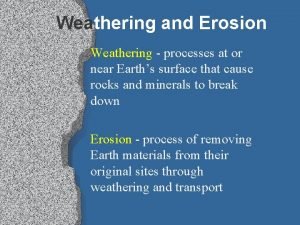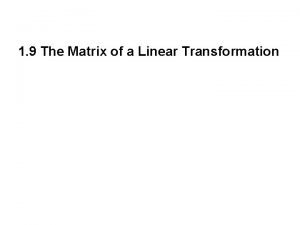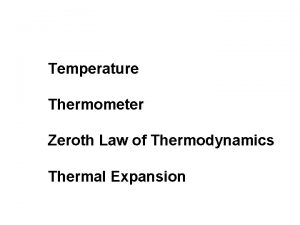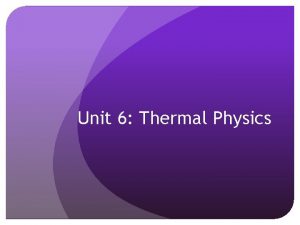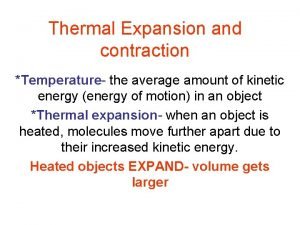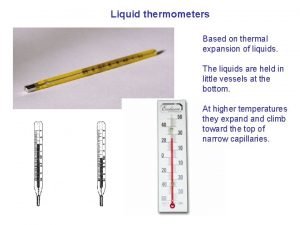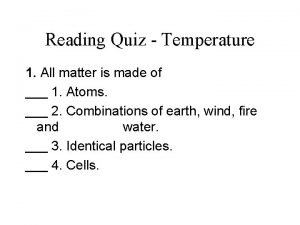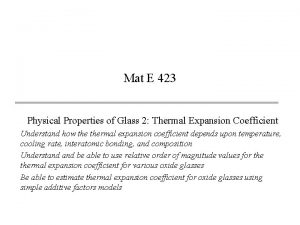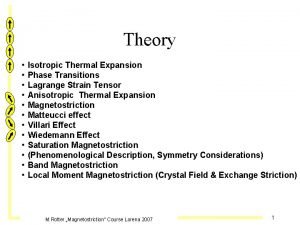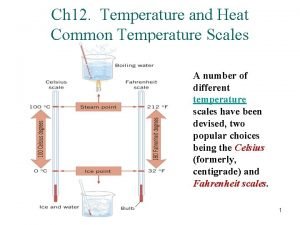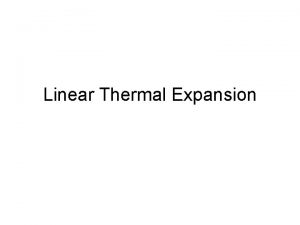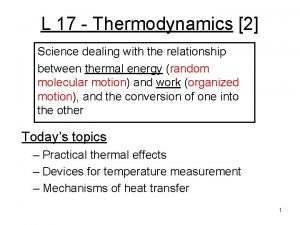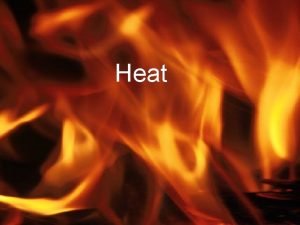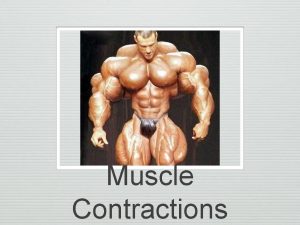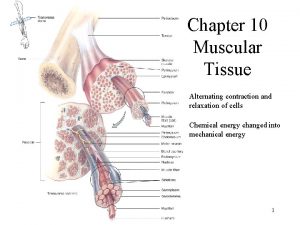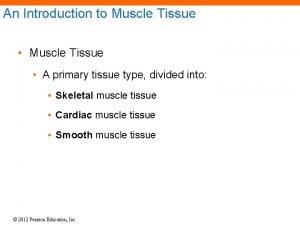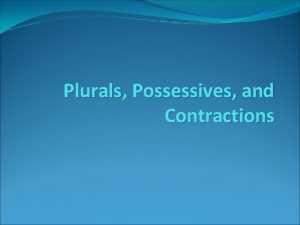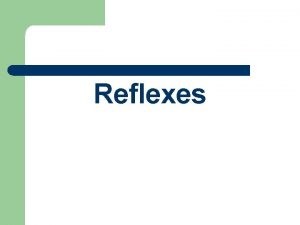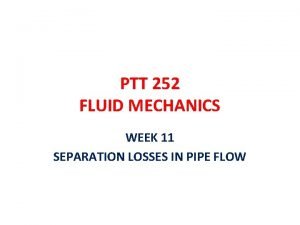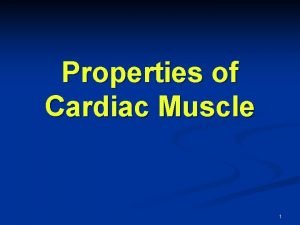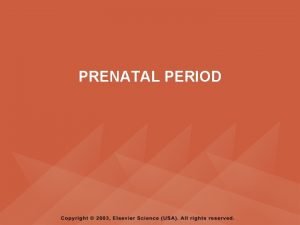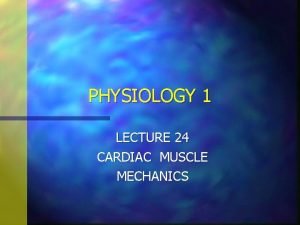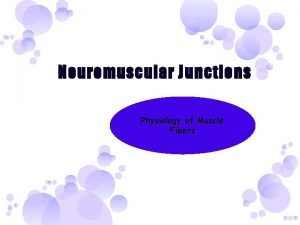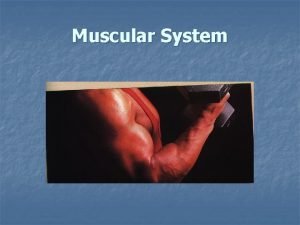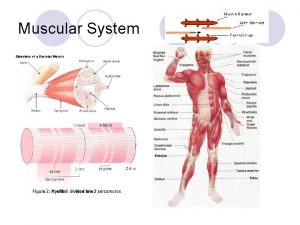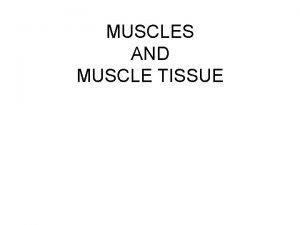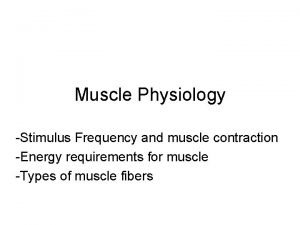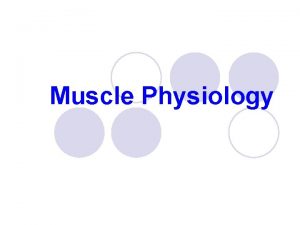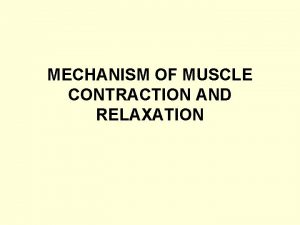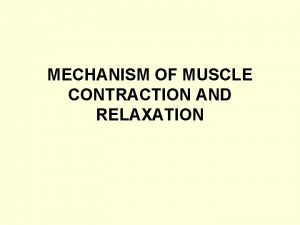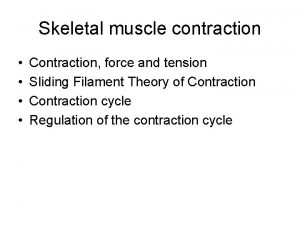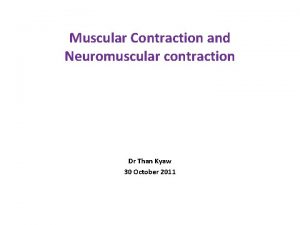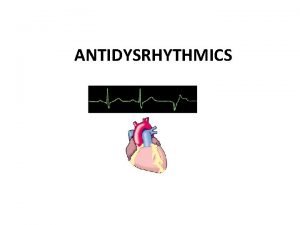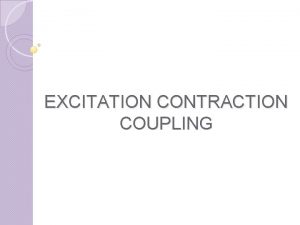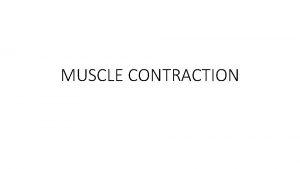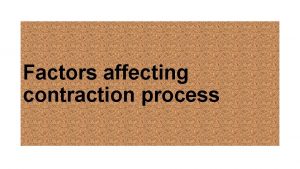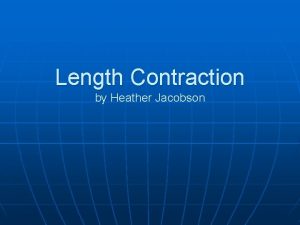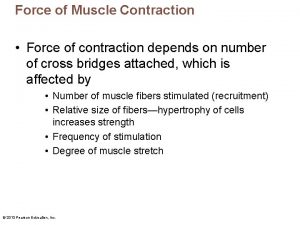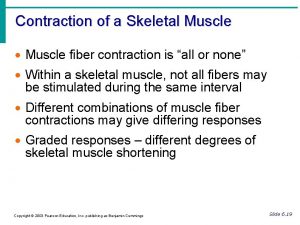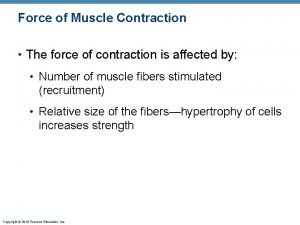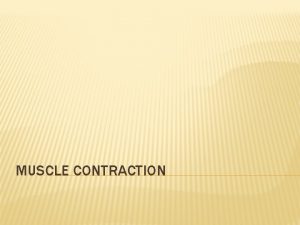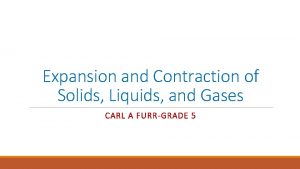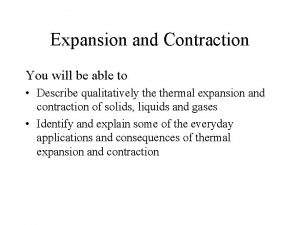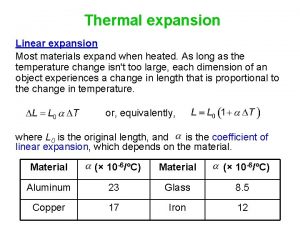THERMAL EXPANSION AND CONTRACTION Science 10 Thermal Expansion






































- Slides: 38

THERMAL EXPANSION AND CONTRACTION Science 10

Thermal Expansion and contraction • Temperature- the average amount of kinetic energy (energy of motion) in an object • Thermal expansion- when an object is heated, molecules move further apart due to their increased kinetic energy. • Heated objects EXPAND- volume gets larger

■ Thermal contraction- when an object cools, molecules move closer together due to their decreased kinetic energy. Cooled objects CONTRACT- volume gets smaller ■ You see this in action when reading a thermometer, adjusting a thermostat, or watching the weather report.

■ IMPORTANT: ■ Solids, liquids and gases all show thermal expansion/contraction, but gases expand/contract the most. ■ Thermal expansion is a CHARACTERISTIC PROPERTY of solids and liquids- this means solids/liquids expand differently; depending on what material they are made of.

■ All gases expand contract equally, regardless of what they are, so thermal expansion is NOT a characteristic property of gasses. ■ Charles’ Law : At constant pressure, when temperature increases, volume increases; when temperature decreases, volume decreases. ( direct proportion)

Thermal contraction/expansion in weather ■ Air pressure: weight of air molecules ■ Low air pressure: less air molecules, less dense-warm air ■ High air pressure: more air molecules, more dense-cold air ■ High pressure air masses move to areas of low pressure (molecules always move from more crowded areas to less crowded areas)

■ Thermal Expansion: ■ When an object ‘s kinetic energy (temperature) increases, the molecules move more rapidly. This causes them to spread apart and the object expands (volume increases). ■ Thermal Contraction: ■ When an object‘s kinetic energy (temperature) decreases, the molecules move less rapidly. This causes them to move closer together and the object contracts (volume decreases).

■ Objects expand when heated and shrink when cooled ■ How does this impact density? ■ When an object is heated, its density … ■ When an object is cooled, its density…. ■ Do all states of matter show equal amounts of thermal expansion/contraction? – NO !

■ SOLIDS: ■ Thermal expansion is why sidewalks have spaces between sections- so they can expand or contract with changes in temperature.

■ LIQUIDS: ■ Think of an example of how ■ we use thermal expansion ■ of a liquid in an everyday object. ■ A thermometer works by calibrating the scale on the expansion and contraction of the alcohol in the tube. ■ Do you think you could fill an alcohol thermometer with mercury and still have it measure temperature accurately?

■ A rising environmental concern is the warming of the ocean. If the temperature of the ocean rose 1° C, average sea level would rise about a foot due to thermal expansion. This would move the shore line up about 20 feet!

■ GASSES: ■ Gasses show the greatest thermal expansion and contraction. Why? ■ We see the concept of gasses and thermal expansion and contraction every night on the news. ■ Where? ■ Weather!

Cold air masses are MORE dense (causing high air pressure) Warm air masses are LESS dense (causing low air pressure). When a cold air mass meets a warm air mass- what do you think happens? http: //www. classzone. com/books/earth_sc ience/terc/content/visualizations/es 2002/e s 2002 page 01. cfm? chapter_no=visualization

WIND AND OCEAN CURRENTS Science 10

A Little Background … ■ Atmospheric Pressure is the pressure the air exerts as gravity pulls it towards the earth’s surface. – Atmospheric pressure is measured using a barometer. – Since air molecules are so spread out (lots of empty space), we don’t feel the pressure that they exert. ■ Differences in air pressure help cause winds and affect air masses. They are also factors in the formation of storms such as thunderstorms, tornadoes and hurricanes.

Neat Fact ■ The weight of the air that is pushing down on your shoulders at any given time is equivalent to 1 ton, or about the weight of a fully grown rhino.

What is Wind? ■ Wind is a movement of air in the atmosphere. How Wind Develops ■ Wind is caused by a difference in air pressure due to unequal heating of the atmosphere. Question: Where on the planet does the surface get heated more than other areas? . . . ■ At the Earth’s surface, wind always blows from areas of high pressure to areas of low pressure.

How are Winds Created? Winds are created by…. 1. Heating the air, decreases pressure (warm air rises creating a low pressure) ↓ 2. Cool air rushes into replace the warm air (cooler dense air, produces high pressure) ↓ 3. As air goes from high to low pressure winds form.

How are Winds Created? ■ This is a CONVECTION style… Convection Current Demo Time!! ■ http: //www. youtube. com/watch? v=7 x. W Wow. Xtuv. A

Classifying Winds ■ Localized winds are winds affect only small areas. ■ Types of Local Winds ■ Sea Breezes- from sea to land ■ Land Breezes- from land to sea ■ Prevailing winds are winds that affect large areas. ■ They affect weather around the globe.

Causes of Prevailing Winds are caused by a combination of convection currents and the Earth’s eastward rotation. Air at the equator is warmed and rises, forming a convection current called the equatorial convection current. This wind moves northward and begins to cool.


The Coriolis Effect ■ Earth’s rotation causes anything that moves LONG DISTANCES, such as prevailing winds, to APPEAR to change directions. ■ The apparent change in direction of a moving object in a rotating system is called the CORIOLIS EFFECT. ■ video ■ Video 2

Coriolis cont… ■ This is evident on the Earth because as Earth rotates eastward, an object travelling from north to south will appear to move to the right. ■ In the southern hemisphere objects moving from the pole appear to move to the left. ■ The Coriolis effect is more predominant closer to the poles.



Prevailing Wind Terms: ■ Polar easterlies – occur between 60 degrees latitude and the poles and moves east to west. ■ Mid-latitude westerlies – occurs between 30 degrees and 60 degrees latitude and move from west to east ■ Northeast trade winds – occur just north of the equator and move east to west. ■ Southeast trade winds – occur just south of the equator and move east to west.

Effects of Prevailing Winds ■ Help distribute large amounts of solar energy from the equator to the colder parts of the world. ■ Prevailing winds also carry moisture, causing a variety of precipitation (snow, rain, etc…)

Ocean Currents

Ocean Currents are a mass movement or flow of ocean water. Currents are like a river within the ocean. The reason Norway and Iceland have mild winters is due to ocean currents. Two types Surface and Deep

Surface Current ■ Surface Currents are horizontal, stream -like movements of water that occur at or near the surface of the ocean. ■ Can reach depths of several hundred meters. Surface Current Animation

■ Red current = warm current ■ Blue current = cold current • Surface currents flow in a circular pattern – Northern Hemisphere flows clockwise – Southern Hemisphere flows counterclockwise – Poles flow in opposite direction • Notice that the warm currents flow from the equator

Surface Currents Controlled by three factors: 1. Prevailing winds = Cause surface currents to flow in the direction the wind is blowing (top 400 m) 2. Coriolis Effect 3. Continental Deflections = shape of the land it flows up against.

Deep Currents ■ Deep Currents are a stream-like movement of ocean water far below the surface. ■ Caused by changes in density – This change in density is the result of changing temperature and salinity (saltiness)

Causes, in-depth ; ) ■ Change in temperature – Decreasing the temperature (it’s colder) of water increases density (water sinks) ■ Change in salinity – Increasing the salinity of water increases density (again, making water sink) – Salinity increases because when water at the poles freezes, the salt doesn’t freeze so it’s left behind and sinks to the ocean floor and is replaced by new water (hence the current)

Causes, in-depth ; ) – Both TEMPERATURE AND SALINITY causes warmer less dense water from the equator to move and to be replaced (water will always want to be level and that is why the water that leaves gets replaced) – The Pic on the next page does a good job explaining this phenomena…


 Thermal expansion and contraction examples
Thermal expansion and contraction examples Smooth muscle contraction vs skeletal muscle contraction
Smooth muscle contraction vs skeletal muscle contraction Expansion and contraction weathering
Expansion and contraction weathering Expansion and contraction
Expansion and contraction Horizontal contraction/expansion matrix
Horizontal contraction/expansion matrix Thermometer and thermal expansion
Thermometer and thermal expansion What's your favorite subject at school
What's your favorite subject at school Thermal expansion examples
Thermal expansion examples Thermal expansion in liquids
Thermal expansion in liquids What is the unit of thermal capacity
What is the unit of thermal capacity Why does water behave in this unusual fashion?
Why does water behave in this unusual fashion? Thermal expansion notes
Thermal expansion notes Thermal expansion of glass
Thermal expansion of glass Thermal expansion tensor
Thermal expansion tensor Thermal coefficient of linear expansion
Thermal coefficient of linear expansion Thermal expansion coefficient of wood
Thermal expansion coefficient of wood Solid
Solid Thermal expansion
Thermal expansion Thermal expansion in liquids
Thermal expansion in liquids Chapter 5 thermal energy answer key
Chapter 5 thermal energy answer key Thermal transfer vs direct thermal printing
Thermal transfer vs direct thermal printing Atp and muscle contraction
Atp and muscle contraction Alternating contraction and relaxation
Alternating contraction and relaxation Skeletal muscle contraction steps
Skeletal muscle contraction steps Possessive plurals
Possessive plurals Designing software for ease of extension and contraction
Designing software for ease of extension and contraction Reflexes 2+ meaning
Reflexes 2+ meaning Gradual contraction loss coefficient
Gradual contraction loss coefficient Autorythmicity
Autorythmicity Fern test
Fern test Length tension relationship muscle
Length tension relationship muscle Acceleration in labor
Acceleration in labor Is atp needed for muscle contraction
Is atp needed for muscle contraction Muscle system
Muscle system Isotonic vs isometric contraction examples
Isotonic vs isometric contraction examples Muscle spasm
Muscle spasm Latent phase muscle contraction
Latent phase muscle contraction Treppe
Treppe Cross bridge theory
Cross bridge theory


